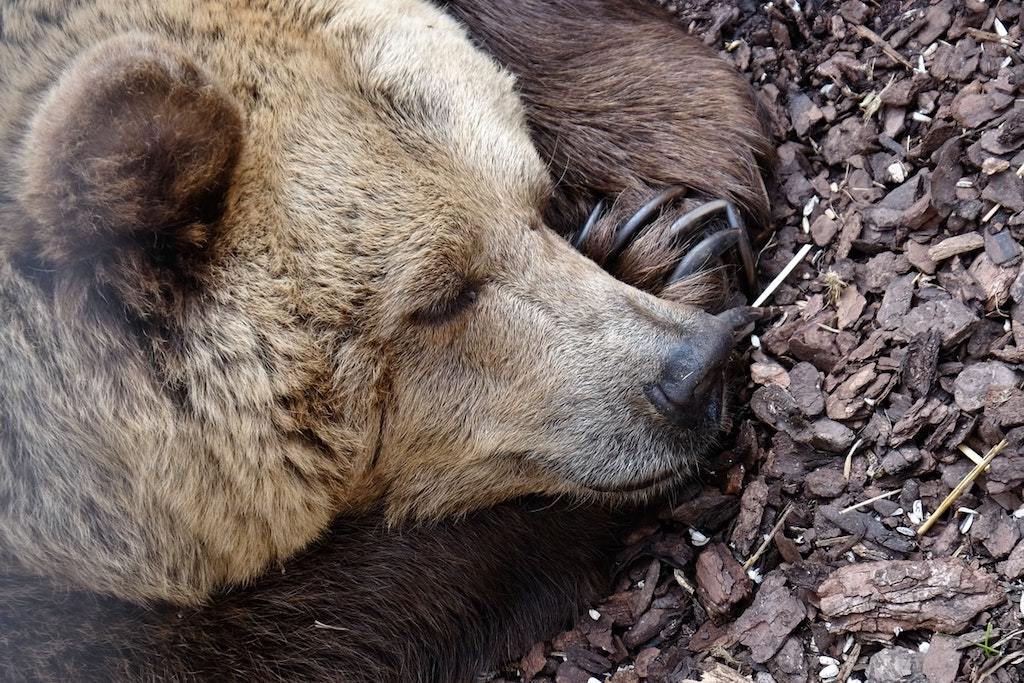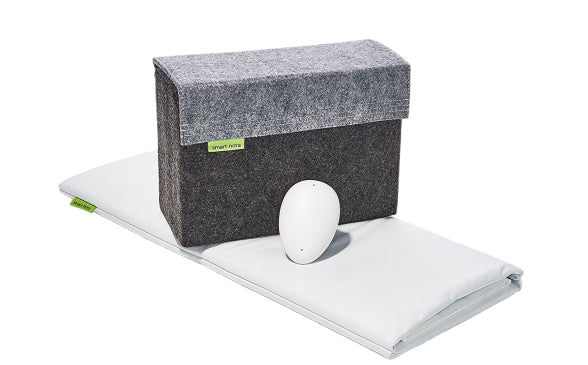
Categories
Hibernate and Survive: The Rules of Hibernation

During these cold winter months when you’re scraping the ice off your windshield or walking to the grocery store bundled up and still shivering, you might be jealous of all the animals who get to fatten up and sleep through these rather tough months. Unfortunately for us humans, life goes on and we don’t get to put on weight and hide in a hole like many other animals that hibernate get to. After all, hibernation is just a long—often months—sleep, right? Well, it’s actually not that simple. What we think of as hibernation is pretty simplified, but it all comes down to energy conservation (another thing us humans could learn a bit about, huh!). What does it mean to hibernate? Which animals do it? Are there lessons we can learn from them?
What is hibernation?
Contrary to popular belief, hibernation isn’t just a long sleep. When animals hibernate, they’re performing an essential energy-saving activity that allows them to survive through months of the year that are otherwise scarce in terms of food and shelter.
When hibernating, several physiological changes (called torpor) occur:
These physiological changes are the main source of saved energy. It takes a lot of energy for endothermic animals (commonly referred to as “warm-blooded”) to keep their body temperature regulated. On the other hand, ectothermic, or “cold-blooded,” animals are reliant on weather conditions to stay warm—picture a lizard sunning on a rock.
For us endotherms, winter can still be a challenge. When the temperature drops, these animals need enough food/calories to burn to counter the cold, which can be difficult during seasons where less food is naturally available. In order to survive, it makes sense for many animals to simply go into hibernation, lowering the base body temperature and metabolism in order to conserve calories.
It’s not just a long winter nap—to hibernate is to survive.
Bears vs. Other Animals That Hibernate
When we picture a hibernating animal, most of us conjure up an image of a bear in a den, snuggling with a nightcap and pillow, all fat and happy. Like others who hibernate, they’ll spend the warmer late summer and early fall packing on the pounds with carbohydrate-rich foods and building out a hibernation nest (called a hibernaculum), but bears don’t actually hibernate like most other animals.
While their metabolisms are pretty similar to other animals that hibernate, bears don’t meet the same requirements when it comes to body temperature (which doesn’t drop all that much at all) or wakefulness. In fact, during their long winter sleep, bears can still feed their young and sometimes wake up out of their “hibernation” and move around for a bit before hittin’ the hay again!
Animals That Hibernate
Most animals that hibernate are much smaller than bears—hedgehogs, squirrels, hamsters, and mice all hibernate, spending their winters in that state of deep, frozen bliss while they wait out nature’s cruelest conditions.

Marina Blanco, Ph.D. and project manager at the Duke Lemur Center studies hibernation in dwarf lemurs of Madagascar, the only primates that regularly hibernate. She notes that when animals hibernate, “most of the physiological functions are extremely slowed down or completely halted… and [brain activity] becomes undetectable.” This is very different from standard sleep, in which the brain is actually very active. Blanco even noted in a 2016 study that animals that hibernate undergo periods of arousal in which their brains activate so that they can sleep! Very strange, considering our public understanding of how hibernation works.
Hibernating for Survival in Australia

In Australia, wildfire can burn through the tinder-dry brush of the outback faster than in many other parts of the world, as we’ve seen in the catastrophic wildfires ravaging the continent. In a study published in 2016, researcher Julia Nowack and her team released findings that showed how short-beaked echidnas—one of the world’s very few mammals that lays eggs—survive these particularly harsh conditions.
Nowack’s research found that echidnas in a wildfire area will burrow into the ground and enter a state of torpor or brief hibernation, lowering their body temperature and metabolism. No need to seek out food in a dangerous condition or expend energy keeping cool. "Lowering their body temperature is connected to a reduction of energy expenditure," says Nowack. "It enables echidnas to stay inactive for longer and therefore allows them to stay hidden and protected."

Can Humans Hibernate?
It’s not a crazy question to ask! Maybe you need to catch up on sleep or you’ve got extra vacation hours saved up and a cold winter is about to hit. Well… the jury’s not out yet, though there are certainly scientists studying whether or not it’s possible for humans to hibernate. You’ve seen it in sci-fi movies though, like the scene in Alien (1979) when the humans come out of “hyper sleep,” alive and healthy after months of conserving oxygen and other limited resources for their long journey. Is it possible we may someday use hibernation to do the same?
An expert team organized by the European Space Agency wants to know. Team member and associate professor of neuroscience at the University of Oxford Vladyslav Vyazovskiy has thoughts on the subject, as long-term space travel becomes more of a likelihood than ever before. His studies range from the effect of hibernation on the nervous system and hormones to the need for humans to come out of hibernation in order to engage in necessary deep sleep.
“While we’re still unsure whether safe prolonged human hibernation is possible, research looking at potential mechanisms may provide the novel insights needed for this to become a reality. Recent technological advances and new pharmacological and genetic tools have already shown great potential to induce or manipulate sleep. But to fully understand how we could safely induce human hibernation, we will likely need to dissect key brain circuits and identify the key molecular pathways that regulate our sleep functions,” he notes.
Hibernating Here on Earth
So there you have it. Hibernation isn’t so complex, huh? It’s just a way for animals to survive, whether through food scarcity or adverse physical conditions. While we don’t have the ability to simply double our body weight and hunker down for the winter, research into human hibernation shows that someday we may be hibernating too—under the guise of “hyper sleep” as we travel to distant planets and solar systems. In the meantime, right here on our own planet Earth, animals are curled up all over the planet in hibernaculums, from bears to birds to bats, resting through the long winter to emerge in Spring, just in time to enjoy the early bounties of a warmer season.

